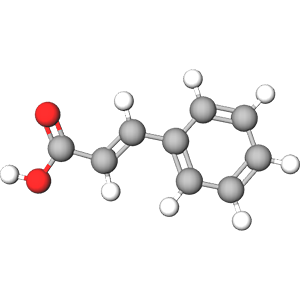

Cinnamic acid is a key aroma compound naturally found in cinnamon and other plants. It possesses a sweet, spicy scent reminiscent of cinnamon with a hint of citrus. It forms the basis for many balsamic and spicy fragrances, contributing depth and warmth.
Utilized to add warmth and spice to fragrances, creating depth in oriental and woody compositions. It's often paired with floral or fruity notes to enhance complexity.
IUPAC Name: (E)-3-phenylprop-2-enoic acidCAS Number: 621-82-9
Molecular Formula: C9H8O2
Molecular Weight: 148.16 g/mol
Boiling Point: 298.00 to 300.00 °C @ 760.00 mm Hg
Melting Point: 133 °C
Class: Acid
Use/s: Scent
Synonyms
1: CINNAMIC ACID 2: TRANS-CINNAMIC ACID 3: 3-Phenylacrylic acid 4: (E)-Cinnamic acid 5: trans-3-Phenylacrylic acid 6: Phenylacrylic acid 7: Zimtsaeure 8: (E)-3-phenylprop-2-enoic acid
Chemist Says
Solid with a honey floral odor; [Merck Index] White crystalline solid; [Alfa Aesar MSDS]
Scent: Honey Floral
Scent profile
Scent profiles are inherently subjective and can significantly differ among individuals, and may also be influenced by the conditions at the time of evaluation. The information provided here is a synthesis of data from diverse sources, including books, cross-references, artificial intelligence analyses, and chemical research sites, aiming to present a comprehensive overview. We've distilled this information to highlight the most frequently observed scent profiles for each molecule or compound, offering a generalized perspective.
1: Sweet, Balsamic, Spicy
 Irritant
Irritant